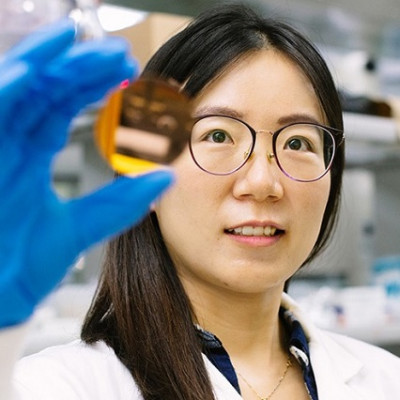"Water desalination membranes should simultaneously exhibit high water flux and high salt rejection," said Professor of Chemistry Dr. Yu Han, who led the study.
Carbon nanomaterials, such as carbon nanotubes and graphene, are expected to meet these requirements because of their unique surface chemistry and propensity to stack into channels with diameters smaller than one nanometer. Yet, channel alignment and stacking difficulties make their large-scale use in membranes challenging.
"One way to address these limitations is through two-dimensional porous carbonaceous membranes with regular and uniformly distributed subnanometer-sized molecular transport channels," said first author Jie Shen, a postdoctoral student in Han's group whose research focuses on developing novel nanoporous materials thin-films, including 2D materials, MOFs and COFs.
However, these membranes are typically synthesized in solution, which promotes the random growth of a disordered three-dimensional structure with poorly defined micropores. KAUST professors Yu Han, Vincent Tung and Ingo Pinnau and former KAUST scientist Lance Li have developed a method that helps control the growth of two-dimensional conjugated polymer frameworks into ultrathin carbon films using chemical vapor deposition.

KAUST researchers have developed a membrane with excellent water desalination performance in forward and reverse osmosis configurations.
"One way to address these limitations is through two-dimensional porous carbonaceous membranes with regular and uniformly distributed subnanometer-sized molecular transport channels," said first author Jie Shen, a postdoctoral student in Han's group whose research focuses on developing novel nanoporous materials thin-films, including 2D materials, MOFs and COFs.
However, these membranes are typically synthesized in solution, which promotes the random growth of a disordered three-dimensional structure with poorly defined micropores. KAUST professors Yu Han, Vincent Tung and Ingo Pinnau and former KAUST scientist Lance Li have developed a method that helps control the growth of two-dimensional conjugated polymer frameworks into ultrathin carbon films using chemical vapor deposition.
Read the original article on King Abdullah University of Science and Technology (KAUST).
